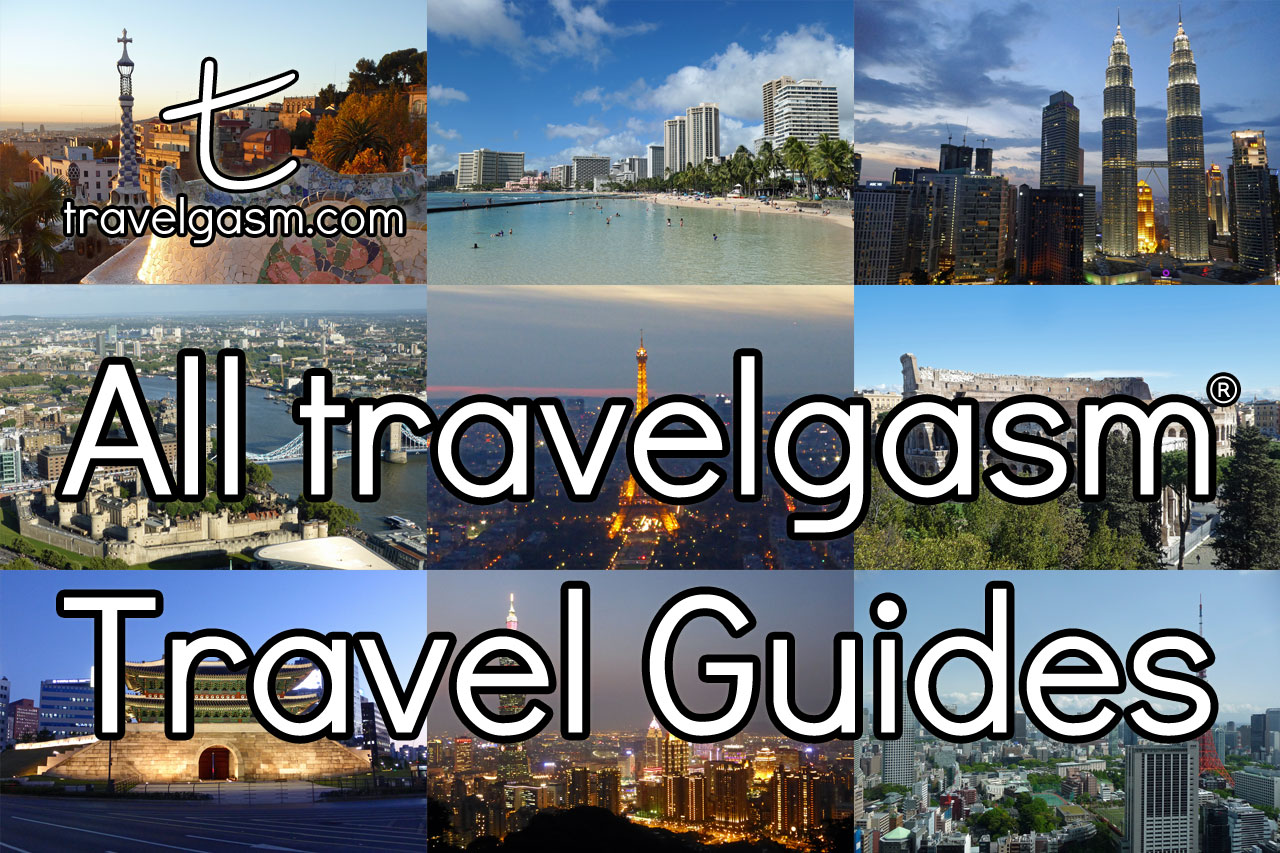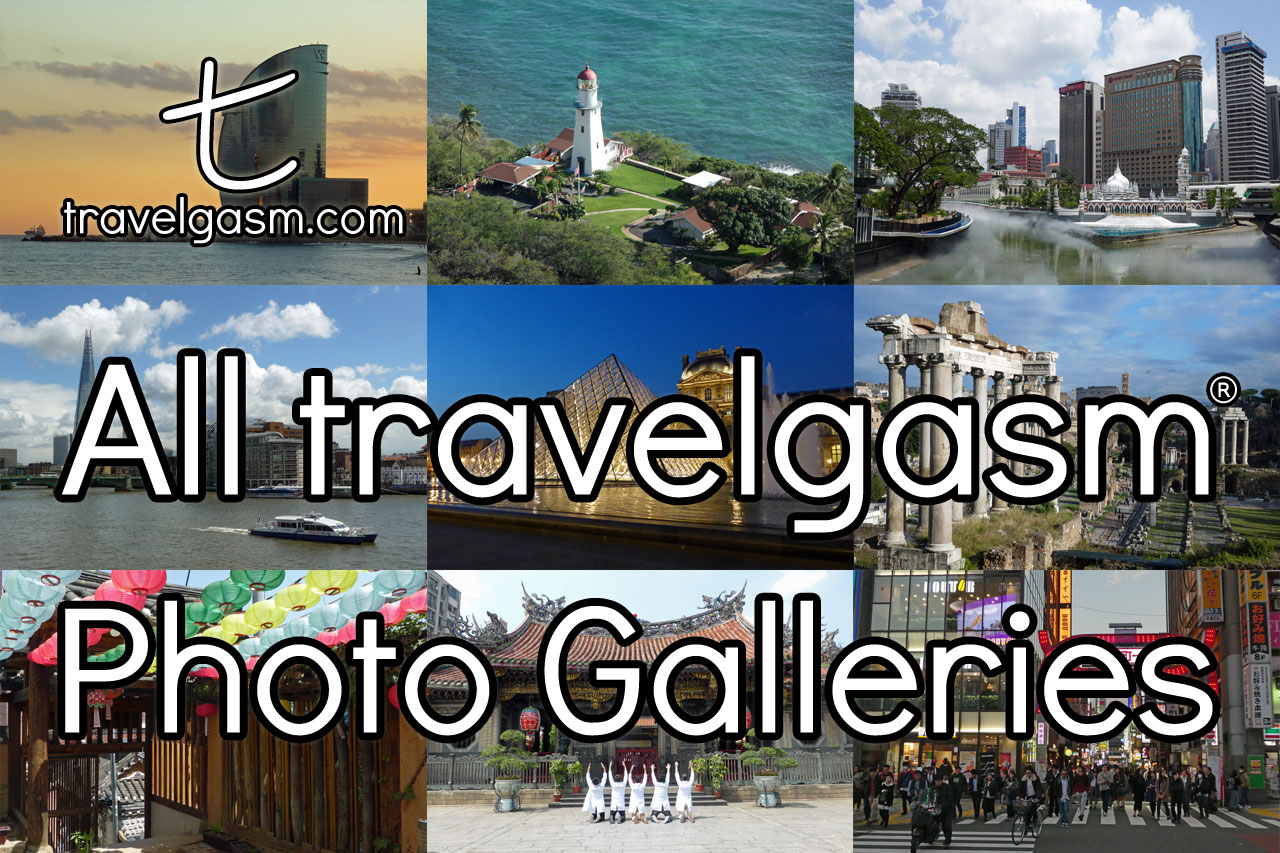Cities > Tokyo > 7 Things Tourists Do in Tokyo That You Should Do Also...
6) Visualize Six Trees
Roppongi: Tokyo City View & Gaien-Higashi Nightlife

Literally "Six Trees" in Japanese, Roppongi (六本木) has long had an association with the military; first with the Japanese army during the Meiji period and later with the US occupation of Japan after WWII. Because of the US presence in the neighborhood, a number of restaurants, bars, and stores started to pop up to cater to soldiers and personnel. In turn, more foreigners were attracted to the neighborhood because of these businesses and the foreign population and retail grew in tandem. To this day, Roppongi remains an area with a high concentration of foreign embassies and foreign companies as well as a significant Western expat population in Tokyo.
Although it is not the most affordable neighborhood in the city, travelgasm.com was based in Roppongi for a month on one visit to Tokyo, and we can vouch that it is an easy place for a foreigner to live, complete with familiar brands, high English proficiency, plenty of Western restaurant and nightlife options, and solid metro connectivity.
Modern, Transit-Connected Architecture
There are many metro stations with attached shopping malls in Tokyo, but few stations have true mixed-use development — retail, office, hotel, and residential together — whereas Roppongi Station (六本木駅) has not just one, but two such metro-connected complexes. These developments are the 2003 Roppongi Hills (六本木ヒルズ) — designed by architecture firm KPF and centered around the 54-story Mori Tower (森タワ) — and the 2007 Tokyo Midtown (東京ミッドタウン) — designed by architecture firm SOM and centered around the also 54-story (but modestly taller) Midtown Tower (ミッドタウンタワ).
Architecturally — although the designs of Roppongi Hills and Tokyo Midtown are more recent, elaborate, and luxurious — each development can trace much of its inspirational lineage to the Modernist ideas of the French-Swiss architect Le Corbusier. Roppongi Hills and Tokyo Midtown effectively are self-contained "cities within a city" hosting skyscrapers nestled in a combination of elevated platforms and manicured parks. In fact, both provide just about everything someone needs to live, work, and play. It would be entirely possible to stay within one of these developments and never even need to leave.
No doubt, just like many Modernist designs, some Western architecture critics would lament the huge scale, the often maze-like passages, the relationship with some surrounding portions of the neighborhood, and the lack of affordable housing for Roppongi Hills and Tokyo Midtown alike. These are legitimate criticisms, but there also is much to appreciate about both comfortable, mixed-use, transit-connected developments, as well.
The Tokyo City View Skydeck
If you're interested in modern architecture, you likely would consider Roppongi Hills or Tokyo Midtown alone to be worth a visit. However, for most tourists, the key attraction likely is to be the Tokyo City View Skydeck (東京シティビュー スカイデッキ) at the top of Roppongi Hills' Mori Tower (Tokyo Midtown does not have an observation deck).
The highest observation deck in Tokyo is Tokyo Skytree, which is the tallest free standing structure in Japan. In our experience, you can get away with not buying an advance ticket for the Tokyo City View Skydeck, but it definitely would be wise to book a ticket in advance for Tokyo Skytree because lines can be very long.
Not only are the lines shorter, but the Tokyo City View observation deck also is more centrally located, costs less, and is much closer to the iconic Tokyo Tower — Tokyo's orange and white homage to the Eiffel Tower — so it has significant advantages compared to Tokyo Skytree. If the view from the free Tokyo Metropolitan Government Building Observatories (東京都庁) in Shinjuku doesn't fulfill your observation deck needs, and you don't mind paying for a ticket, give Tokyo City View a try. The travelgasm.com photo above was taken from one of the office floors in Roppongi Hills, but the view from the Tokyo City View observation deck is similar, it is just from a higher floor.
Eat, Drink & Stay out of Trouble in Roppongi
To eat or drink in Roppongi, there are dozens of restaurants and bars in the shopping malls within the Roppongi Hills and Tokyo Midtown complexes. There also are hundreds of other restaurants in the surrounding neighborhood ranging from familiar international chains like Hard Rock and Tony Roma's to small local joints.
Roppongi is well known among short-term visitors and expats alike for its nightlife — mostly clustered around Gaien Higashi (外苑東通り) — particularly for bars and clubs that are more welcoming to gaijin (外人) than those in Kabukicho (歌舞伎町) and elsewhere in Tokyo. However, just because some bars and clubs are more welcoming, does not mean that you should assume the area is entirely safe. The US Embassy warns that drink spiking, exorbitant bar tabs, false charges on credit cards, robbery, and assault do occur and you should be cautious and vigilant in Roppongi. In general, if someone is trying to aggressively get you to enter any business — whether it is a bar, club, restaurant, massage joint, travel agency, or whatever — the best case scenario for following their advice is that you are going to lose some money. Good businesses don't need to pay touts to drag customers off the street. Avoid any and all touts regardless of gender or ethnicity. Only pay cash in bars in Roppongi.
Bars popular with expats that we visited at one time or another and enjoyed include Abbey Road, a Beatles cover band bar; Hobgoblin, a British-style pub; and Milwaukee Bar, a gritty basement bar inspired by watching too many old episodes of Laverne & Shirley. Hobgoblin and Milwaukee Bar also serve food. Tourists sometimes get themselves into trouble by looking for whatever they imagine to be a more Japanese drinking experience, whereas Roppongi is where expats and Japanese alike tend to go for Western bars, so it is best to stick with Western bars in this neighborhood. If you want a more Japanese experience, you might prefer to book an organized tour of Kabukicho, but Kabukicho is much more expensive.
We've mapped out how to get to — and between — Roppongi Hills and Tokyo Midtown as well as the primary nightlife area around Gaien Higashi below. We've also included a short walk in an older portion of the district that can be used either as an independent stroll or as a shortcut between the two complexes. Once you get away from the awful elevated freeway, the car park, and a gritty alley or two, this stroll presents a portion of Roppongi with attractive, leafy walkways too narrow for cars and small-scale charm. It's too minor to consider it one of our 7 Things Tourists Don't Do in Tokyo, but You Should, but it definitely is overlooked and provides an interesting contrast between the big, monolithic modern developments and the small, warren-like structure of the old neighborhood.
How to Get Here: For Roppongi Hills, take the Tokyo Metro Hibiya Line (Silver) to Roppongi Station (H04). Exit 1C is connected directly to Roppongi Hills. For Tokyo Midtown, take the Toei Metro Oedo Line (Magenta) to Roppongi Station (E23). Exit 8 is connected directly to Tokyo Midtown. You also can walk conveniently between the two developments through Roppongi Station, but because the two portions of the station are operated by different metro companies (Tokyo and Toei), you would need to pay again to go through the station gate of the other company if you didn't arrive on that company's train. However, if you have an applicable day pass, you can walk through at no extra cost. You also can walk between the developments at street level following our suggested walk.
Cities > Tokyo > Tokyo Best 7 > Next: (7) Admire Asakusa... >>
Like Roppongi Hills, Tokyo Midtown, the City View Observation Deck, or Roppongi Nightlife? Tell your friends and frenemies on social media that you discovered them first:
Intelligent and good-looking readers of travelgasm.com like you also sign up for our free monthly-ish mailing list.
Live in Tokyo? What tourist attraction do you most like to share with visitors? Spotted anything out-of-date or inaccurately translated? Please tell travelgasm.com. ありがとう. Thanks!




